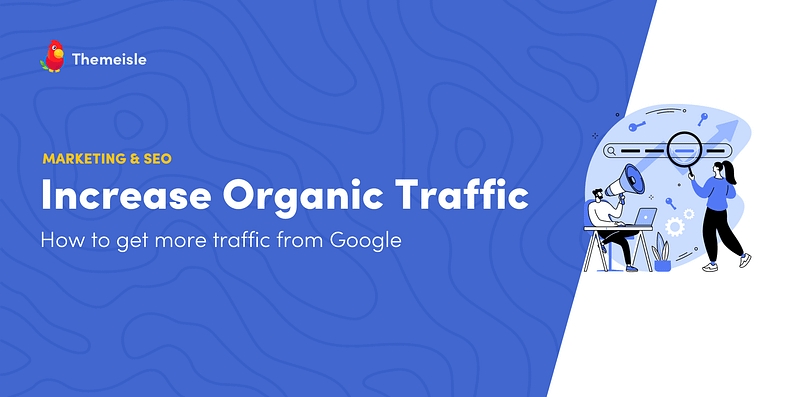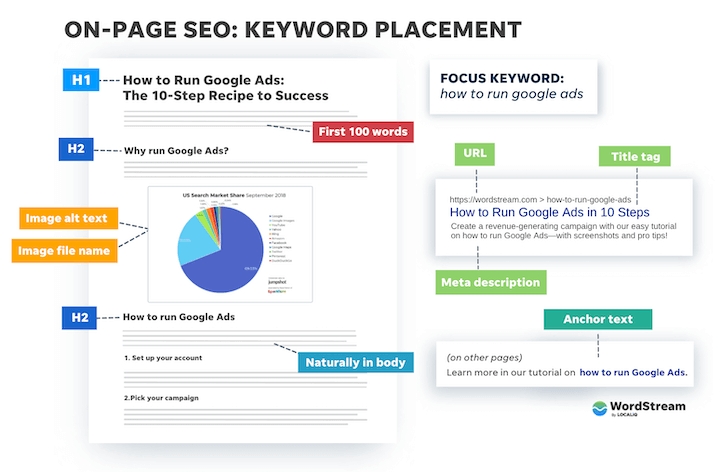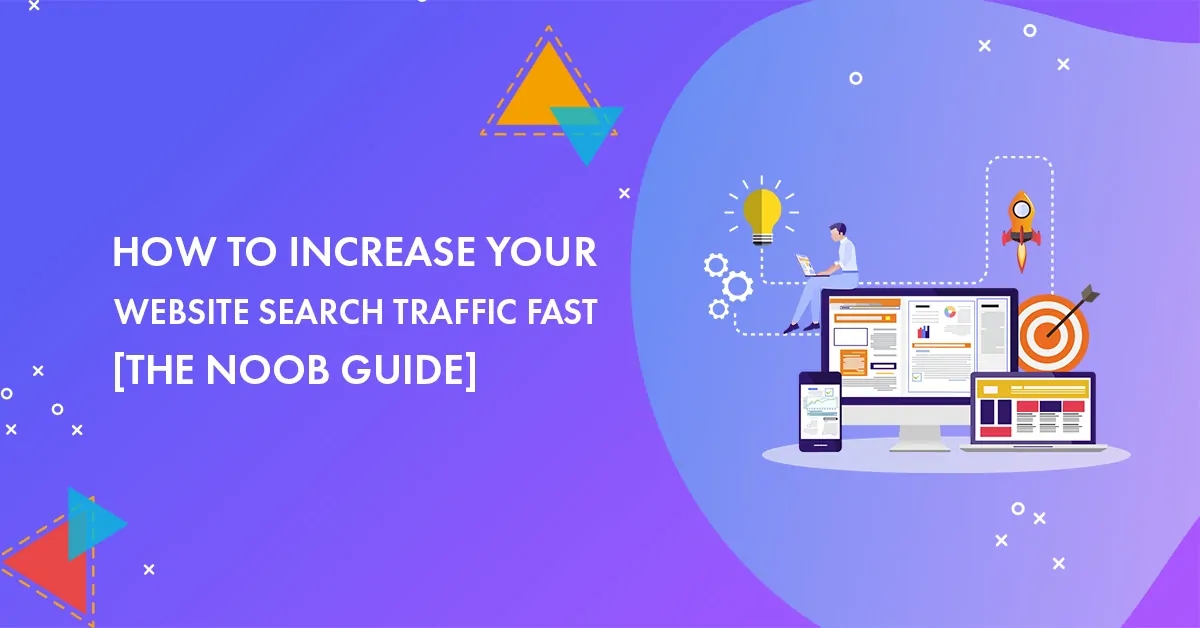A Beginner's Guide to Increasing Your Website Traffic with Adsense Ads
Buy CPC Traffic | Buy Display Ads | Exclusive traffic sources | Buy Push Ads | Popunder ADS | Buy Native Ads | Buy Preroll Ads
Buy CPC Traffic | Buy Display Ads | Exclusive traffic sources | Buy Push Ads | Popunder ADS | Buy Native Ads | Buy Preroll Ads
Welcome to our beginner's guide on how to boost your website traffic using Adsense ads! Whether you have just started your own website or have been running one for a while, increasing website traffic is always a top priority. Adsense ads can be a powerful tool to drive targeted traffic to your site, increase your visibility, and ultimately grow your business. In this guide, we will walk you through the basics of using Adsense ads and provide you with tips and strategies to optimize your ad campaigns.
First, let's start with the basics. Adsense is an advertising platform developed by Google that allows website owners to monetize their online content by displaying targeted ads. These ads are generated based on the content of your website and the interests of your visitors. When a visitor clicks on an ad, you earn revenue, making it a win-win situation for both you and the advertisers.
One of the major benefits of using Adsense ads is that they are highly customizable. You have the flexibility to choose the size, style, and placement of the ads on your website. This way, you can seamlessly integrate the ads into your site's design, making them look more natural and engaging for your visitors. Remember, the more relevant and appealing the ads are to your audience, the higher the chances of them clicking on the ads and driving traffic to your website.
However, it's important to strike a balance between monetization and user experience. While ads can be a great source of revenue, bombarding your visitors with too many ads or placing them in obtrusive locations can lead to a negative user experience. You don't want your visitors to feel overwhelmed or irritated by the ads. Instead, focus on creating a seamless and enjoyable browsing experience for your visitors while still maximizing your ad revenue.
Boost Your Website Traffic

In order to have a successful online presence, it is crucial to have a consistent flow of traffic to your website. Without visitors, your website will not be able to achieve its goals, whether that be generating sales, increasing brand awareness, or providing valuable content to your audience. Here are some effective strategies to boost your website traffic:
1. Create High-Quality Content
One of the most important factors in attracting visitors to your website is to create high-quality content that is valuable and relevant to your target audience. By providing useful information, solving problems, or offering entertainment, you will not only attract visitors but also encourage them to stay on your website longer.
2. Optimize Your Website for Search Engines
Search engine optimization (SEO) is a crucial component of driving organic traffic to your website. By optimizing your website's content, meta tags, headings, and other elements, you increase the chances of appearing higher in search engine results pages. This will make it easier for potential visitors to find your website when searching for relevant keywords.
3. Utilize Social Media

Social media platforms have become powerful tools for driving traffic to your website. By regularly sharing your content, engaging with your audience, and leveraging social media advertising, you can reach a larger audience and direct them to your website. Have a presence on platforms that are popular with your target audience and regularly post content that encourages clicks and shares.
4. Collaborate with Influencers

Partnering with influencers who have a large and engaged following in your niche can be a highly effective way to boost your website traffic. By collaborating on content, hosting joint promotions or giveaways, or having them endorse your products or services, you can tap into their audience and drive traffic to your website.
5. Invest in Advertising

While organic traffic is important, investing in online advertising can provide a quick and targeted boost to your website traffic. Ad networks like cheap popunder ads can display your ads to specific demographics, interests, or locations, ensuring that your website is seen by potential visitors who are more likely to convert.
By implementing these strategies, you can significantly increase your website traffic and achieve your online goals. Remember to consistently monitor your traffic, analyze the results, and adjust your strategies accordingly to optimize your website's performance.
Increase Your Website Traffic with Adsense Ads
Driving traffic to your website is a crucial aspect of running a successful online business. One effective way to increase your website traffic is by using Adsense ads. Adsense, a program offered by Google, allows website owners to display targeted ads on their web pages, earning revenue each time a visitor clicks on an ad. In addition to generating income, Adsense ads can also help attract new visitors to your website. Here's how you can boost your website traffic with Adsense ads:
1. Choose the Right Ad Placement
The placement of your Adsense ads on your website plays a significant role in attracting the attention of your visitors. It is essential to strategically place your ads where they are visible but not intrusive. Placing ads above the fold, which means they are visible without scrolling, can significantly increase the chances of attracting clicks and increasing traffic.
2. Optimize Your Website Design

Optimizing your website design to accommodate Adsense ads can help improve the user experience and increase traffic. Ensure that your website layout is clean and easy to navigate, allowing visitors to find the content they are looking for without any confusion. A clutter-free design will also make your ads more prominent and likely to capture the interest of your visitors.
3. Target Relevant Keywords
When creating content for your website, it is essential to target relevant keywords that are related to your niche. By using keywords that are commonly searched by your target audience, you can increase the chances of your website appearing in search engine results. This can lead to more organic traffic and potential new visitors who may be interested in clicking on your Adsense ads.
4. Monitor and Analyze Performance
Regularly monitoring and analyzing the performance of your Adsense ads can help you identify areas for improvement and make necessary adjustments. Pay attention to the click-through rates, ad placements, and overall revenue generated by your ads. By analyzing this data, you can identify which ads are performing well and optimize your website accordingly to increase traffic.
In conclusion, leveraging Adsense ads can be an effective way to increase your website traffic. By strategically placing your ads, optimizing your website design, targeting relevant keywords, and monitoring performance, you can attract new visitors to your website and generate revenue through ads. Remember to follow Google's policies and guidelines regarding Adsense ads to ensure compliance and maximize your success.
Get Started with Adsense Ads: A Step-by-Step Guide
Are you ready to start monetizing your website with Adsense ads? This step-by-step guide will walk you through the process of getting started with Adsense and help you increase your website traffic and earnings.
Step 1: Sign up for Adsense
The first step to getting started with Adsense is signing up for an account. Visit the Adsense website and click on the "Sign up now" button. Fill in the required information, including your website URL, and submit your application. It may take a few days for your application to be reviewed and approved.
Step 2: Create ad units
Once your Adsense account is approved, you can start creating ad units. Ad units are the blocks of ads that will be displayed on your website. Log in to your Adsense account and navigate to the "My ads" section. Click on "New ad unit" and choose the type and size of the ad unit you want to create. You can customize the appearance of the ad unit to match your website's design.
Step 3: Place ad code on your website
After creating the ad unit, Adsense will generate an ad code. Copy the ad code and paste it into the HTML of your website where you want the ad unit to be displayed. Make sure to follow the placement policies of Adsense to ensure that your ads are displayed correctly.
Step 4: Optimize your ad placement
To maximize your earnings, it's important to optimize the placement of your ads. Experiment with different ad placements and monitor their performance using Adsense's reporting tools. Consider placing ads above the fold, within the content, or in the sidebar to increase visibility and click-through rates.
Step 5: Drive traffic to your website
Now that you have Adsense ads set up on your website, it's time to drive traffic to increase your earnings. Use various marketing strategies such as SEO, social media promotion, and content marketing to attract more visitors to your site. The more traffic you have, the higher the chances of earning from your ads.
Step 6: Track your performance and adjust
Regularly monitor the performance of your ads using the Adsense reporting tools. Keep an eye on metrics like click-through rate (CTR) and earnings to see how your ads are performing. Make adjustments to your ad placement and strategy as needed to optimize your earnings.
Step 7: Keep optimizing
Optimization is an ongoing process. Continuously test different ad sizes, types, and placements to find the best combination that works for your website. Stay updated with Adsense's policies and guidelines to ensure compliance and to make the most out of your ads.
By following these steps, you can maximize your website's earning potential with Adsense ads. Remember to provide valuable content, focus on driving quality traffic, and keep experimenting with ad placement and optimization strategies to boost your revenue.
Ad Placement: Optimize Your Adsense Ads for Maximum Traffic
When it comes to maximizing traffic and revenue from your Adsense ads, ad placement plays a crucial role. The right placement of ads can make a significant difference in the performance of your website. Here are some tips to help you optimize your Adsense ads for maximum traffic:
1. Above the Fold
Place your Adsense ads above the fold, which refers to the portion of the webpage that is visible without scrolling. Visitors are more likely to notice and interact with ads that are placed in this area. Consider placing your ads near the main content or navigation menu.
2. Blend with the Design
Make your ads blend seamlessly with the design of your website. Use the same color scheme, fonts, and formatting as the rest of your site. By doing so, ads will appear more natural and less intrusive, increasing the chances of users clicking on them.
3. Strategic Placement

Experiment with different ad placements to find what works best for your website. Consider placing ads in strategic locations such as within the content, at the end of blog posts, or in the sidebar. Analyze your website's layout and user behavior to determine the most effective ad placements.
You can also use Google's Auto ads feature, which automatically places ads for you based on machine learning algorithms. This can save you time and effort while still maximizing the potential of your ads.
4. Responsive Ads
Ensure that your Adsense ads are responsive and adapt to different screen sizes. With the increasing use of mobile devices, it is essential to have ads that display correctly on smartphones and tablets. Responsive ads will provide a better user experience, leading to higher engagement and click-through rates.
5. Test and Monitor
Regularly test different ad placements and monitor the performance of your ads. Use Google Analytics or other tracking tools to determine which ad positions generate the most clicks and revenue. Continuously optimize your ads based on this data to maximize your website's traffic and earnings.
Remember, ad placement is just one aspect of optimizing Adsense ads for maximum traffic. It is essential to also focus on relevant and high-quality content, loading speed, and user experience. By combining these factors, you can create a website that attracts more visitors and generates higher revenue with Adsense ads.
Choosing the Right Ads: Tips for Targeting Your Audience
When it comes to placing ads on your website, it's important to choose the right ones in order to effectively target your audience. Here are some tips to help you make the best choices:
Know your audience: Before selecting ads, it's crucial to have a clear understanding of your target audience. Consider their demographics, interests, and preferences. This will help you select ads that are more likely to appeal to them.
Relevance: Ensure that the ads you choose are relevant to your website's content. Visitors are more likely to click on ads that are related to the topic they came to your site for. This will not only increase your click-through rate but also enhance the overall user experience.
Ad format: Consider the different ad formats available and choose the ones that best suit your website's design and layout. Experiment with different formats such as text ads, display ads, or native ads to see which ones perform the best.
Placement: The placement of your ads can greatly impact their visibility and effectiveness. Experiment with different positions on your webpage to find the optimal placement that attracts attention without being intrusive.
Ad size: Different ad sizes can have varying levels of visibility and impact. Choose ad sizes that are commonly used and supported by most advertisers to maximize your earning potential.
Avoid ad overload: While it may be tempting to display as many ads as possible to increase revenue, be cautious not to overwhelm your audience. Too many ads can negatively impact user experience and increase bounce rates.
Monitor and optimize: Regularly monitor the performance of your ads and make adjustments as necessary. Pay attention to metrics such as click-through rates, conversion rates, and revenue generated to optimize your ad selection and placement.
By employing these tips, you can choose the right ads that target your audience effectively and maximize your website's traffic and revenue potential.
Monitor and Analyze Ad Performance: Track Your Website Traffic
Once you have implemented Adsense ads on your website, it's important to monitor and analyze the performance of these ads to determine their effectiveness and make necessary improvements. Tracking your website traffic will allow you to gain valuable insights into your audience, their behavior, and the overall impact of your ads.
Utilize Google Analytics
One of the most powerful tools for tracking website traffic is Google Analytics. It provides detailed data and reports on various aspects of your website, including ad performance. By integrating your Adsense account with Google Analytics, you can access a wealth of information to better understand how your ads are performing.
Google Analytics allows you to track key metrics such as impressions, clicks, click-through rates, and revenue generated from your ads. It also provides demographic data about your visitors, enabling you to identify your target audience and optimize your ad strategy accordingly.
Set Up Conversion Tracking

In addition to tracking ad impressions and clicks, it's essential to measure the conversions resulting from your ads. Conversion tracking helps you determine the effectiveness of your ad campaigns by tracking the actions users take after clicking on your ads.
By setting up conversion tracking, you can measure various outcomes, such as purchases, sign-ups, or other desired actions. This information will give you insights into the ROI of your ads and help you optimize your campaigns for better results.
Consider using a popunder ads network
Popunder ads are another effective way to drive traffic to your website and increase ad performance. These ads open behind the main browser window and are only visible when the user closes or minimizes the current page.
By utilizing a popunder ads network, you can effectively reach a wider audience and boost your website traffic. These networks offer targeting options and real-time analytics to help you optimize your ad campaigns and maximize conversions.
Track ad impressions and clicks using Google Analytics.
Set up conversion tracking to measure the effectiveness of your ad campaigns.
Consider using a popunder ads network to increase website traffic.
By monitoring and analyzing the performance of your Adsense ads and tracking your website traffic, you can make data-driven decisions to optimize your ad strategy and drive more targeted traffic to your website.
Monetize Your Website: Earn Revenue with Adsense Ads
If you have a website and are looking for ways to generate revenue, look no further than Adsense ads. Google Adsense is a popular advertising program that allows website owners to earn money by displaying targeted ads on their site. Whether you have a blog, an e-commerce store, or a content-based website, Adsense can help you turn your traffic into income.
Getting started with Adsense is easy. Simply create a Google Adsense account and follow the steps to get your website approved. Once approved, you can start displaying ads on your site and earn money each time a visitor clicks on an ad.
Adsense works by analyzing the content of your website and displaying ads that are relevant to what your visitors are interested in. This increases the chances of visitors clicking on the ads and increases your earning potential. With Adsense, you have control over the type of ads that appear on your site, so you can choose the format and style that best fits your website's design.
One of the benefits of using Adsense is that it is a passive source of income. Once you have set up the ads on your website, you can sit back and watch the money roll in. Adsense takes care of everything, from finding advertisers to optimizing ad placements and tracking your earnings. This allows you to focus on creating great content and driving traffic to your site.
In addition to displaying ads, Adsense also offers other ways to monetize your website. You can choose to display search ads, which allow visitors to search your site and see targeted ads along with the search results. This can increase the chances of visitors clicking on ads and generate even more revenue for your site.
Another option is to use Adsense for video, which allows you to earn money by displaying video ads on your website. Video ads are becoming increasingly popular, and with Adsense, you can tap into this revenue stream.
It's important to keep in mind that while Adsense can be a great way to monetize your website, it's not a get-rich-quick scheme. It takes time and effort to build up a significant income from Adsense. However, with the right strategies and a consistent approach, you can gradually increase your earnings and turn your website into a profitable business.
In conclusion, if you have a website and want to earn revenue, consider monetizing it with Adsense ads. With its easy setup, targeted ads, and passive income potential, Adsense is a popular choice for website owners. Take advantage of this opportunity and start earning money from your website today.
Improve Ad Performance: Strategies to Boost Your Website Traffic
Adsense can be a powerful tool for monetizing your website, but in order to maximize its potential, it's important to optimize your ad performance. By implementing the right strategies, you can boost your website traffic and increase your ad revenue. Here are some effective strategies to improve the performance of your Adsense ads:
1. Target Relevant Keywords

One of the key factors in improving your ad performance is targeting relevant keywords. Make sure that your website's content is focused on specific keywords that are relevant to your target audience. By doing this, you can attract visitors who are more likely to be interested in the ads displayed on your website.
2. Optimize Ad Placement

The placement of your ads plays a crucial role in their performance. Experiment with different ad placements on your website to find the most effective positions. Generally, ads placed above the fold (the visible area of the webpage without scrolling) tend to perform better. Additionally, consider placing ads within the content itself, as they can attract more attention from your visitors.
3. Use Responsive Ad Units

In today's mobile-first world, it's crucial to ensure that your website and ads are optimized for mobile devices. Use responsive ad units that automatically adapt to different screen sizes and devices. This will help you reach a larger audience and improve your ad performance across various platforms.
4. Experiment with Ad Formats

Adsense offers a wide range of ad formats, including text, display, and video ads. Experiment with different formats to see which ones work best for your website and audience. Some formats may perform better than others, so it's important to continuously test and optimize your ads to maximize your earnings.
Remember, improving ad performance is an ongoing process. Implement these strategies, monitor your ad performance, and make adjustments as necessary. By continuously optimizing your Adsense ads, you can significantly boost your website traffic and increase your ad revenue.
What is Adsense?
Adsense is an advertising program offered by Google that allows website owners to display targeted advertisements on their websites, in order to earn revenue from clicks or impressions.
How does Adsense work?
Adsense works by analyzing the content of a website and displaying relevant advertisements to the website's visitors. The website owner earns money when visitors click on the ads or view them, depending on the type of ad. Google handles the process of selecting and displaying the ads, as well as tracking the earnings.
Can Adsense help increase website traffic?
Adsense primarily focuses on monetizing website traffic rather than directly increasing it. However, by displaying targeted ads on your website, you can potentially attract more visitors who are interested in the advertised products or services. Additionally, the revenue earned from Adsense can be invested in other marketing efforts, such as paid advertising or content promotion, which can help drive more traffic to your website.
How can I optimize Adsense ads for better performance?
There are several strategies you can use to optimize Adsense ads for better performance. These include placing the ads in prominent positions on your website, optimizing the ad sizes and formats, experimenting with different ad colors and styles to match your website's design, and using responsive ads that automatically adapt to different screen sizes. You should also regularly monitor your ad performance and make adjustments based on the data provided by Google's Adsense dashboard.
Are there any alternatives to Adsense?
Yes, there are several alternatives to Adsense, such as Media.net, Adversal, Chitika, and Infolinks. These alternative ad networks offer different features and payment models, so you can choose the one that best fits your website and target audience. It's recommended to test different ad networks and compare their performance to find the most profitable option for your website.
What is Adsense?
Adsense is an advertising program run by Google that allows website owners to display targeted ads on their websites and earn money from clicks or impressions.
How can I boost my website traffic with Adsense ads?
There are several ways to boost website traffic with Adsense ads. Some strategies include optimizing your website for search engines, promoting your website through social media, creating high-quality content that attracts visitors, and using targeted keywords in your ads.
Buy CPC Traffic | Buy Display Ads | Exclusive traffic sources | Buy Push Ads | Popunder ADS | Buy Native Ads | Buy Preroll Ads
2022-2024 @ Boost Your Website Traffic with Adsense Ads: A Beginner's Guide